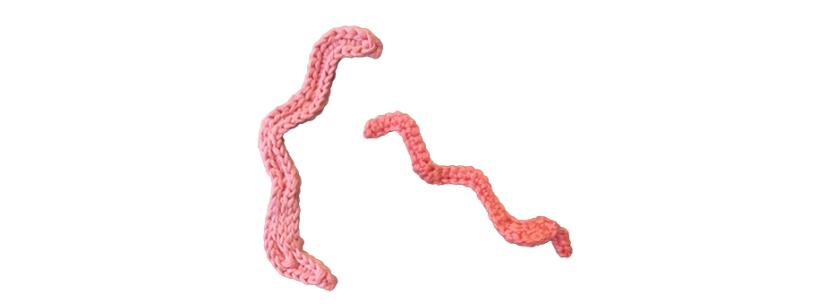Have you had enough passive screen-time and want to make something with your hands, maybe learning a new skill in the process? Join us in contributing to a gallery display of Griffith Park in crochet, with the help of these how-to videos.
As part of our exhibition Investigating Griffith Park we’re inviting the Autry community to make pieces to represent various aspects of the park, from nature to recreational activities, and mail them into the Autry (or drop them off in person once the museum re-opens, if you prefer). We’ll then add your art to the gallery, around a crocheted Griffith Park sign, to capture the essence of the park and create a post-pandemic community display.
This week’s video shows you how to make an earthworm, an essential part of any ecosystem as a food source for animals and birds, as well as through digesting their diet of micro-organisms into nutrient-rich fertilizer for plants. Although California’s native earthworms are being displaced by introduced species in human-dominated areas such as suburban gardens and farms, they are still commonly found in undisturbed oak savannas and chaparral, habitats which make up much of Griffith Park.
You don’t need experience with crochet, as instructor Julie Kadoi walks you through the basic stitches, and for those more comfortable with working from written instructions we have included the pattern below. So, pick up those hooks and yarn, make an earthworm (or maybe make a leafy daisy , a kite, a butterfly, a California poppy , an elderberry leaf , a red-tailed hawk or a party sign from previous videos), and look for future videos in the coming weeks.
